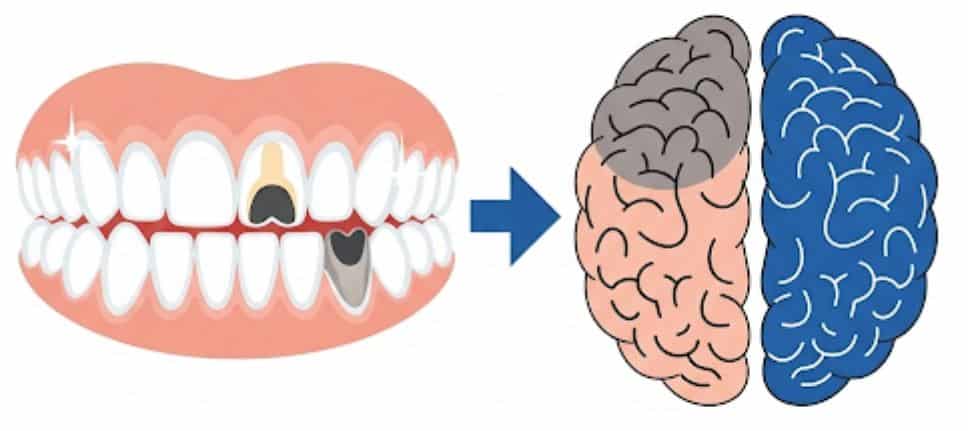
NO Scalpel. NO Drill. LESS Pain. Faster Healing.
In the evolving landscape of dental care, technological advancements continue to reshape how we approach oral health. At Central Park Dental in Mansfield, Texas, Dr. Jiyoung Jung remains at the forefront of these innovations, particularly in the realm of bacterial reduction through laser treatment. This sophisticated approach to managing oral bacteria represents a significant leap forward in dental care, offering patients more comfortable, efficient, and effective treatment options than ever before.
Understanding Oral Bacteria and Their Impact
Our mouths naturally host hundreds of bacterial species—a complex microbiome that exists in delicate balance. When this balance is disrupted, problematic bacteria can flourish, leading to conditions ranging from minor gum inflammation to severe periodontal disease and tooth decay.
Traditional methods of bacterial management, while effective to varying degrees, often come with limitations. Mechanical cleaning, antimicrobial rinses, and conventional treatments have served as the standard approach for decades. However, these methods sometimes struggle to reach bacteria hiding in deep periodontal pockets or microscopic surface irregularities.
This is where laser bacterial reduction therapy enters the picture, offering precision targeting that traditional methods simply cannot match.
The Science Behind Dental Laser Technology
Dental lasers function through a precisely controlled emission of energy in the form of light. This light energy is absorbed by specific targets—in this case, oral bacteria and infected tissue—without significantly affecting surrounding healthy structures.
The technology behind dental lasers is both sophisticated and fascinating. Different wavelengths of laser light interact with tissues and bacteria in varying ways, allowing for highly specialized applications. For bacterial reduction specifically, the laser energy effectively disrupts bacterial cell walls, rendering them unable to function or reproduce.
Dr. Jung utilizes state-of-the-art laser systems at Central Park Dental, carefully selected for their proven efficacy and patient comfort. These advanced systems allow for treatment protocols that are both highly effective at bacterial reduction and minimally invasive for patients.
The Bacterial Reduction Laser Treatment Process
When you visit Central Park Dental for bacterial reduction laser therapy, you can expect a streamlined, comfortable experience. The process typically unfolds in several straightforward steps:
First, Dr. Jung conducts a comprehensive oral examination to assess your specific needs and determine if laser bacterial reduction would be beneficial for your situation. This examination might include measuring periodontal pocket depths, evaluating gum inflammation, and identifying areas of concern.
Next, the treatment area is prepared. Unlike many traditional dental procedures, laser bacterial reduction typically requires minimal preparation and often can be performed without anesthesia, though this depends on the individual case and treatment extent.
During the actual laser application, Dr. Jung precisely directs the laser light to target areas harboring harmful bacteria. The specialized wavelength penetrates into periodontal pockets and other hard-to-reach areas, effectively eliminating bacteria while leaving healthy tissue undisturbed. Patients typically experience little to no discomfort—many report only a warm sensation or slight tingling during the procedure.
The entire process is remarkably efficient, with many treatments completed in just one appointment lasting between 30-60 minutes, depending on the extent of the treatment area.
Key Benefits of Laser Bacterial Reduction
Laser bacterial reduction offers numerous advantages over conventional methods, making it an increasingly popular option for patients at Central Park Dental:
Enhanced Precision and Effectiveness
The laser’s ability to target bacteria specifically while minimizing impact on surrounding healthy tissue represents a significant advancement in dental care. This precision targeting allows for more complete bacterial reduction, particularly in difficult-to-access areas like deep periodontal pockets where harmful bacteria often hide.
Studies have demonstrated that laser therapy can eliminate up to 99% of bacteria in treated areas—a substantially higher efficacy rate than many traditional methods can achieve. This thorough bacterial reduction creates an environment more conducive to healing and less hospitable to bacterial recolonization.
Minimally Invasive Treatment Experience
Perhaps one of the most appreciated benefits from the patient perspective is the minimally invasive nature of laser therapy. Unlike some conventional treatments that may involve scraping, cutting, or suturing, laser bacterial reduction accomplishes its goals with minimal trauma to oral tissues.
This gentler approach typically results in:
- Less discomfort during and after treatment
- Reduced or eliminated need for anesthesia in many cases
- Minimal bleeding during the procedure
- Faster healing times following treatment
- Decreased risk of post-treatment infection
Reduced Recovery Time
The minimally invasive nature of laser bacterial reduction translates directly to shorter recovery periods for patients. While traditional surgical approaches to managing oral bacteria might require days of recovery, most patients who undergo laser treatment at Central Park Dental can return to their normal activities immediately after their appointment.
This quick return to normalcy, combined with the reduced need for pain management, makes laser bacterial reduction particularly appealing for busy individuals who cannot afford extended downtime for dental procedures.
Comprehensive Bacterial Management
Laser bacterial reduction addresses one of the fundamental challenges in treating periodontal disease and preventing tooth decay: reaching bacteria in places that traditional cleaning methods cannot access. The laser energy can penetrate into microscopic surface irregularities, tiny fissures in tooth enamel, and deep periodontal pockets—all areas where problematic bacteria tend to accumulate and thrive.
This comprehensive approach to bacterial management helps create a healthier oral environment overall, potentially reducing the risk of future infections and disease progression.
Ideal Candidates for Bacterial Reduction Laser Treatment
While many patients can benefit from laser bacterial reduction, certain individuals may find it particularly valuable:
Patients with Periodontal Disease
For those with gingivitis or more advanced periodontal disease, laser bacterial reduction offers a powerful tool for managing infection and supporting gum health. The laser’s ability to reach deep into periodontal pockets makes it especially effective for addressing the underlying bacterial causes of these conditions.
Dr. Jung often recommends laser bacterial reduction as part of a comprehensive periodontal treatment plan, which may also include scaling and root planing, improved home care routines, and regular maintenance visits.
Individuals Preparing for Dental Procedures
Reducing the bacterial load in the mouth prior to certain dental procedures can improve outcomes and reduce complication risks. Patients preparing for treatments such as dental implants, extensive restorative work, or oral surgery may benefit from a pre-procedural laser bacterial reduction session.
The reduced bacterial presence creates a cleaner environment for these procedures, potentially enhancing healing and integration of dental restorations.
Patients Seeking Preventive Care
Even for individuals without active dental disease, periodic laser bacterial reduction can serve as an advanced preventive measure. By periodically reducing bacterial populations—particularly in hard-to-clean areas—patients may be able to maintain better oral health and potentially reduce their risk of developing conditions like periodontal disease or cavities.
Dr. Jung can assess your specific oral health situation and determine whether preventive laser bacterial reduction would be beneficial as part of your personalized care plan at Central Park Dental.
Those with Compromised Immune Systems
Patients with conditions that affect immune function may find laser bacterial reduction especially valuable. With a reduced ability to fight off infections naturally, these individuals often benefit from the thorough bacterial management that laser therapy provides.
Similarly, patients with systemic conditions that have known connections to oral bacteria—such as certain cardiovascular conditions, diabetes, or respiratory issues—may experience broader health benefits from maintaining lower levels of problematic oral bacteria.
Laser Bacterial Reduction vs. Traditional Methods
To fully appreciate the advantages of laser bacterial reduction, it’s helpful to understand how it compares to more traditional approaches to bacterial management:
Mechanical Cleaning Limitations
Traditional mechanical cleaning methods—including professional scaling and root planing as well as daily brushing and flossing—remain fundamental to good oral health. However, these approaches have inherent limitations. Mechanical cleaning can struggle to fully access deep periodontal pockets, tiny grooves in tooth surfaces, and other areas where bacteria hide.
Even with excellent technique, these methods primarily remove bacterial accumulations rather than actually eliminating the bacteria themselves. This leaves viable bacteria in the mouth that can quickly recolonize cleaned areas.
Antimicrobial Rinses and Their Constraints
Antimicrobial mouth rinses and irrigations provide another traditional approach to bacterial management. While these solutions can reduce surface bacterial counts temporarily, they typically cannot penetrate deeply enough to reach bacteria in periodontal pockets exceeding 3mm in depth.
Additionally, some antimicrobial agents may cause tissue irritation with prolonged use or affect the beneficial bacteria that comprise a healthy oral microbiome.
Traditional Surgical Approaches
More invasive traditional treatments for bacterial reduction, such as surgical pocket reduction procedures, can be effective but often come with significant discomfort, bleeding, and extended recovery periods. These approaches may also remove gum tissue, potentially leading to increased tooth sensitivity and aesthetic concerns.
The Laser Advantage
In contrast to these traditional methods, laser bacterial reduction offers a more comprehensive solution that combines effectiveness with patient comfort. The laser’s ability to specifically target bacteria while preserving healthy tissue represents a significant advancement over methods that cannot discriminate between beneficial and harmful microorganisms.
Moreover, the reduced need for anesthesia, minimal bleeding, and quick recovery times make laser treatment a more convenient option for many patients at Central Park Dental.
Integrating Laser Bacterial Reduction into Your Oral Health Routine
For optimal results, Dr. Jung typically recommends incorporating laser bacterial reduction into a comprehensive oral health strategy. This integrated approach might include:
Personalized Treatment Scheduling
The frequency of laser bacterial reduction treatments varies based on individual needs. For patients with active periodontal disease, Dr. Jung might recommend multiple sessions spaced several weeks apart, followed by maintenance treatments every few months.
For preventive care in patients with good oral health, annual or semi-annual laser treatments might be sufficient to maintain reduced bacterial levels and support ongoing oral health.
Enhanced Home Care Practices
The benefits of professional laser bacterial reduction can be extended through diligent home care. Dr. Jung and the team at Central Park Dental provide personalized guidance on optimal brushing and flossing techniques, as well as recommendations for specialized oral hygiene products that complement laser treatment effects.
Regular Dental Examinations
Consistent dental check-ups remain essential, allowing Dr. Jung to monitor oral health status and adjust treatment recommendations as needed. These examinations help ensure that bacterial levels remain controlled and that any emerging concerns can be addressed promptly.
Consideration of Risk Factors
Certain factors can influence bacterial growth in the mouth and may necessitate adjustments to your laser treatment schedule. These factors include:
- Systemic health conditions like diabetes
- Medications that affect saliva production
- Smoking or tobacco use
- Diet high in refined carbohydrates
- Stress levels that may impact immune function
Dr. Jung takes these and other personal factors into account when developing your customized bacterial management plan.
The Future of Bacterial Management in Dentistry
As dental technology continues to evolve, the field of bacterial management grows increasingly sophisticated. At Central Park Dental, Dr. Jung remains committed to staying at the forefront of these advancements, continually evaluating emerging technologies and techniques to offer patients the most effective care possible.
Research into laser dentistry continues to expand our understanding of optimal treatment protocols, potential applications, and long-term benefits. This ongoing research drives improvements in both the technology itself and the ways in which it is applied in clinical settings.
The future likely holds even more precise targeting of specific bacterial species, potentially allowing for treatments that preserve beneficial bacteria while eliminating only pathogenic strains. Additionally, improvements in laser delivery systems may further enhance patient comfort and treatment efficiency.
Central Park Dental’s investment in advanced laser technology reflects Dr. Jung’s dedication to providing cutting-edge care that prioritizes both effectiveness and patient experience. By embracing these innovations, the practice continues to offer Mansfield residents superior options for maintaining optimal oral health.
Experience Advanced Bacterial Management at Central Park Dental
Maintaining a healthy balance of oral bacteria represents a fundamental aspect of good dental health. With laser bacterial reduction therapy, Dr. Jung offers Central Park Dental patients a state-of-the-art solution that addresses this need with unprecedented precision and comfort.
If you’re interested in learning more about how laser bacterial reduction might benefit your oral health, or if you’d like to schedule a consultation to discuss this advanced treatment option, the Central Park Dental team is ready to assist you.
Contact our Mansfield office today at 817-466-1200 to schedule your consultation with Dr. Jung and discover the difference that advanced laser therapy can make in your dental health journey.
By taking advantage of this cutting-edge approach to bacterial management, you’re not just investing in a cleaner mouth—you’re potentially supporting better overall health and wellbeing for years to come. Experience the future of dental care at Central Park Dental, where innovation meets compassionate, personalized service.


